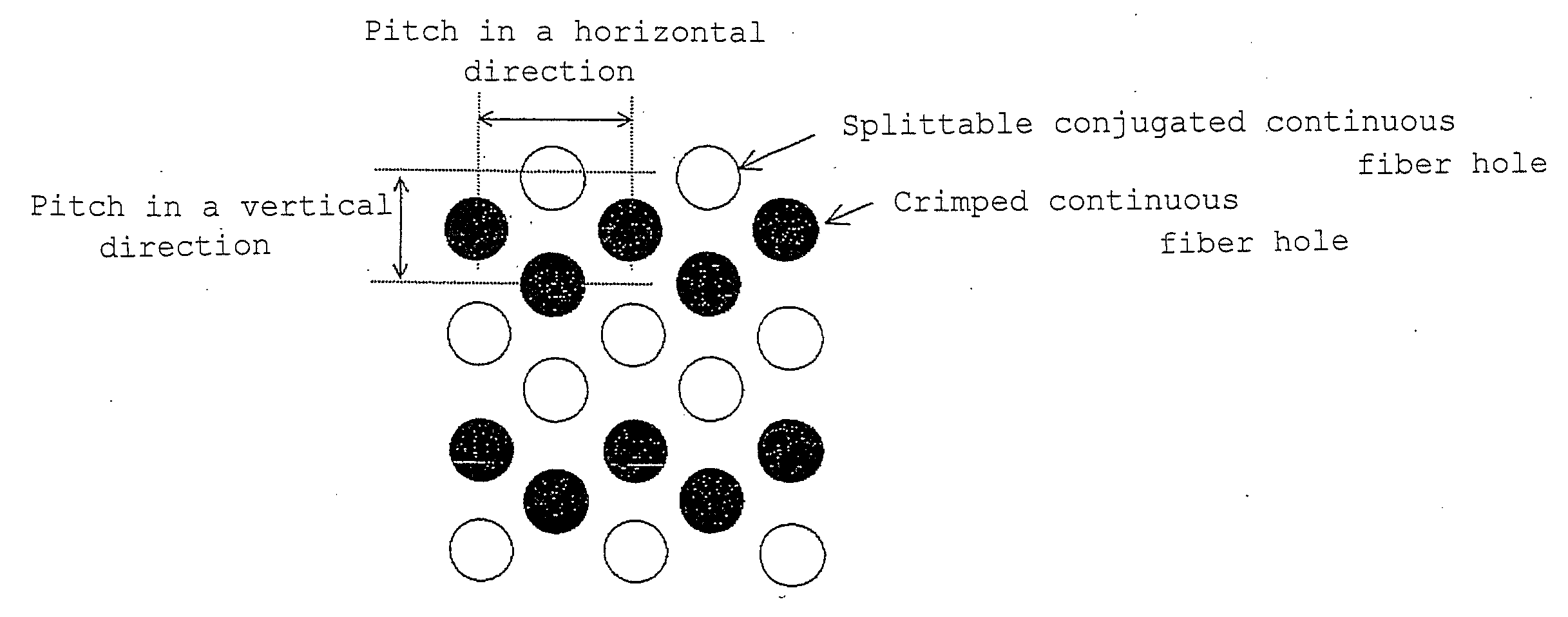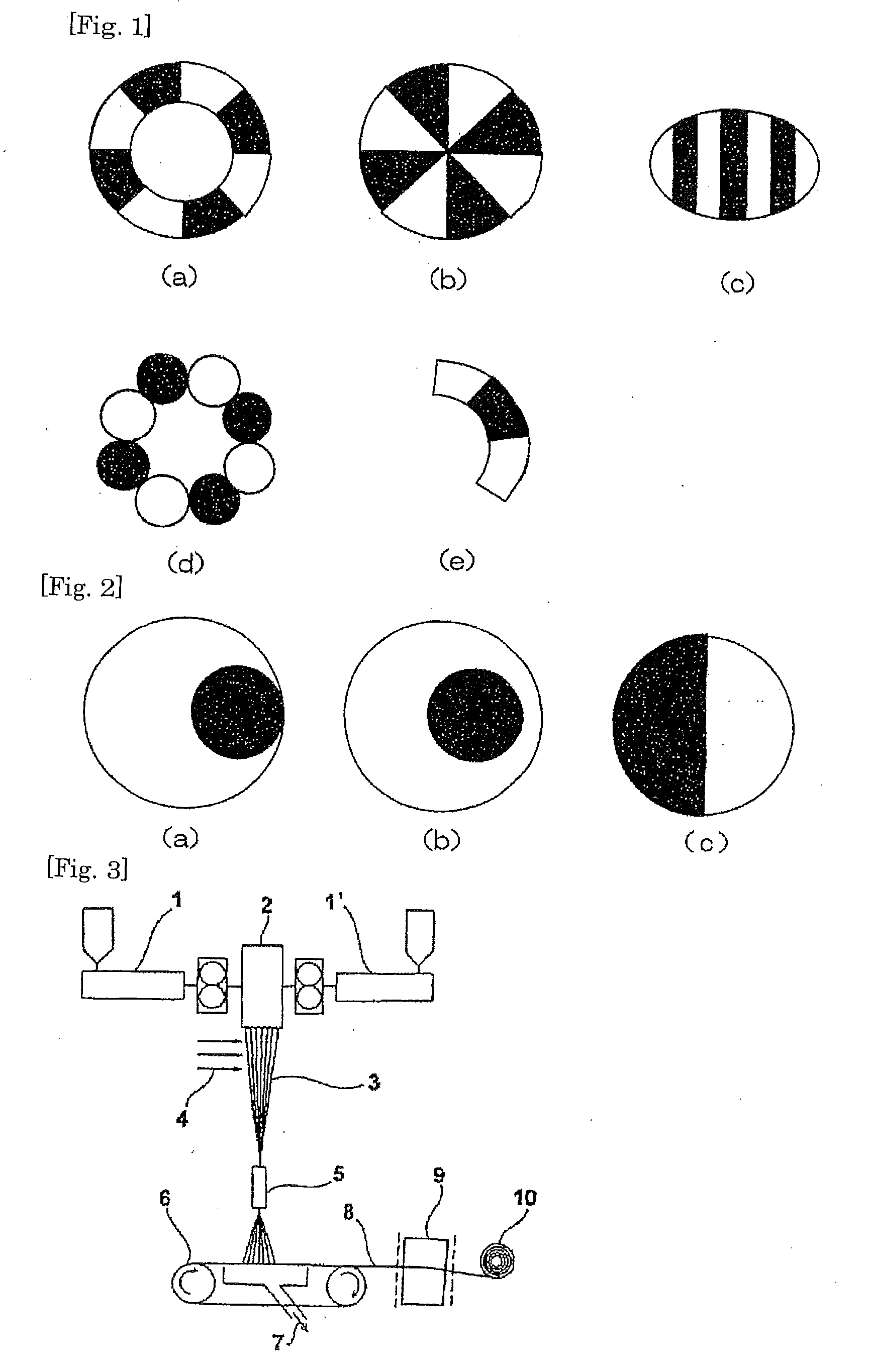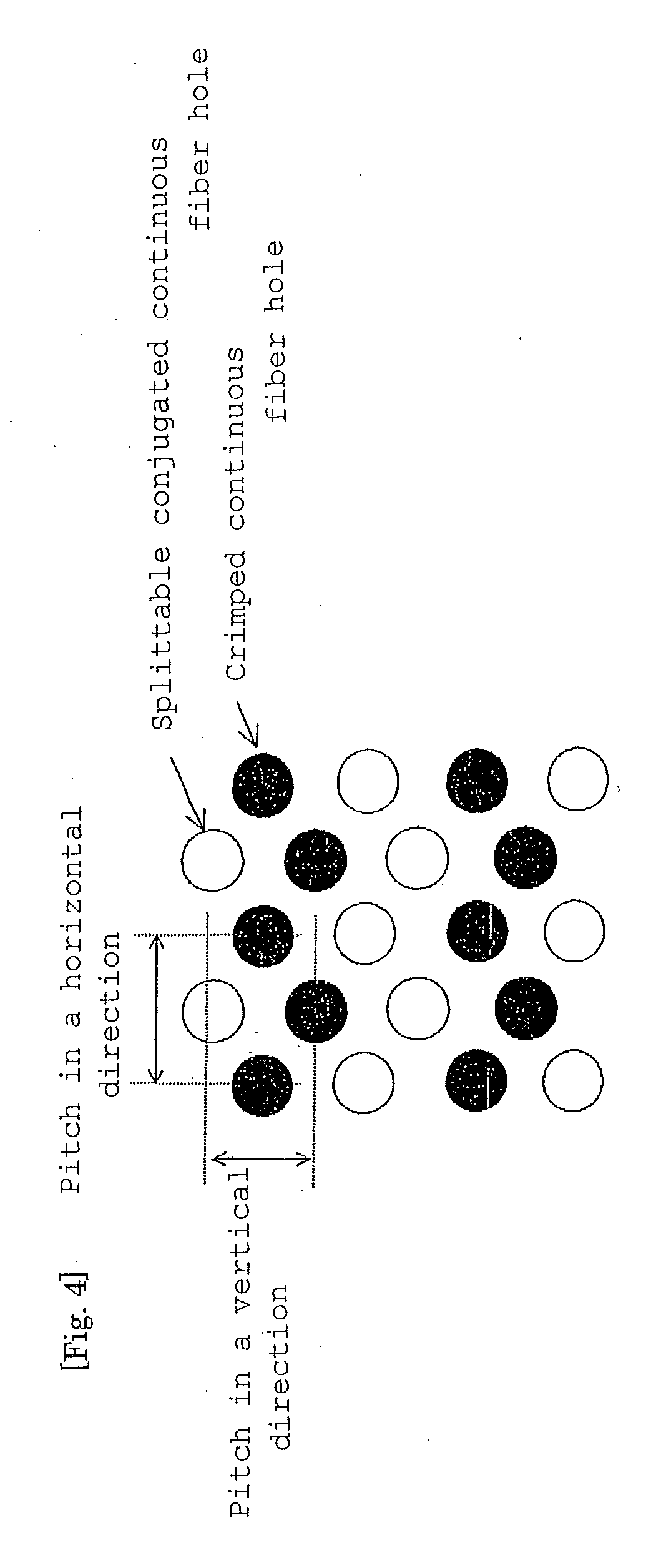Mixed continuous fiber non-woven fabric and method for producing the same
a non-woven fabric and mixed technology, applied in the field of mixed continuous fiber non-woven fabric, can solve the problems of insufficient lint-free property, insufficient wiping property, and large reduction in the productivity of non-woven fabrics, and achieve excellent wiping properties, flexibility, and not only bulkiness. excellent
- Summary
- Abstract
- Description
- Claims
- Application Information
AI Technical Summary
Benefits of technology
Problems solved by technology
Method used
Image
Examples
example 1
Production of a Splittable Conjugated Continuous Fiber Non-Woven Fabric
[0088]A poly L lactic acid based polymer in which a weight average molecular weight Mw is 117000 and MFR (a load of 2160 g, 190° C.) is 47 g / 10 minutes (manufactured by Mitsui Chemicals, Inc., commercial product name: LACEA H-900, L-lactic acid / D-lactic acid (a copolymer ratio)=98.5 / 1.5 mol %, a melting point (Tme): 165° C.) was prepared as polyester (A). In addition, a propylene.ethylene random copolymer in which MFR (a load of 2160 g, 230° C.) is 60 g / 10 minutes (Mw / Mn=2.4, a melting point (Tmo): 143° C., an ethylene content: 4 mol %) was prepared as polyolefin (B). Separate extruders (30 mmφ) were then prepared for the polyester (A) and the polyolefin (B). A molding temperature for a poly L lactic acid based polymer was set to 190° C., and a molding temperature for a propylene.ethylene random copolymer was set to 200° C. The poly L lactic acid based polymer and the propylene.ethylene random copolymer were then...
example 2
Production of a Mixed Continuous Fiber Non-Woven Fabric
[0091]A poly L lactic acid based polymer in which a weight average molecular weight Mw is 117000 and MFR (a load of 2160 g, 190° C.) is 47 g / 10 minutes (manufactured by Mitsui Chemicals, Inc., commercial product name: LACEA H-900, L-lactic acid / D-lactic acid (a copolymer ratio)=98.5 / 1.5 mol %, a melting point (Tme): 165° C.) was prepared as polyester (A). In addition, a propylene polymer in which MFR (a load of 2160 g, 230° C.) is 60 g / 10 minutes was prepared as polyolefin (B). Separate extruders (30 mmφ) were then prepared for the polyester (A) and the polyolefin (B). A molding temperature for a poly L lactic acid based polymer was set to 190° C., and a molding temperature for a propylene.ethylene random copolymer was set to 200° C. The poly L lactic acid based polymer and the propylene.ethylene random copolymer were then molten. A melt spinning was carried out by using a non-woven fabric production apparatus as shown in FIG. 3...
PUM
| Property | Measurement | Unit |
|---|---|---|
| melting point | aaaaa | aaaaa |
| mass % | aaaaa | aaaaa |
| mass % | aaaaa | aaaaa |
Abstract
Description
Claims
Application Information
 Login to View More
Login to View More - R&D
- Intellectual Property
- Life Sciences
- Materials
- Tech Scout
- Unparalleled Data Quality
- Higher Quality Content
- 60% Fewer Hallucinations
Browse by: Latest US Patents, China's latest patents, Technical Efficacy Thesaurus, Application Domain, Technology Topic, Popular Technical Reports.
© 2025 PatSnap. All rights reserved.Legal|Privacy policy|Modern Slavery Act Transparency Statement|Sitemap|About US| Contact US: help@patsnap.com



